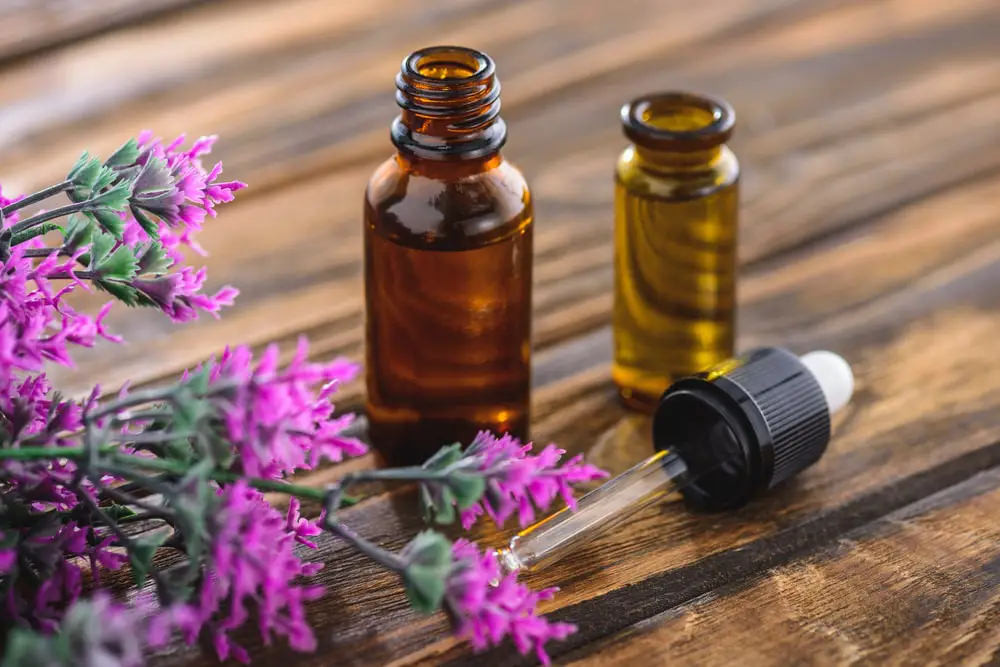Some of the best oils for hyperpigmentation are tea tree oil, sandalwood, oil, lemon oil, carrot seed oil, evening primrose, and rosehip oil. These natural oils help even skin tone and lighten the appearance of dark spots. Find out how each of these oils can help with hyperpigmentation.
This post may contain affiliate links. Read the full disclosure here
- What is Hyperpigmentation?
- Common Treatments for Hyperpigmentation
- Types and Causes of Hyperpigmentation
- Best oils for Hyperpigmentation
- Other Ingredients for Treating Hyperpigmentation
- In Closing
What is Hyperpigmentation?
Hyperpigmentation is a skin condition that produces irregular dark spots caused by an excess production of melanin, especially in aging skin. The severity of the condition depends on one’s skin type. Hyperpigmentation is most prominent among people of color, but it can appear with any skin type.
Severe hyperpigmentation can result in large patches that can cover large areas of skin at any location on the body. Less severe cases often appear as small dark spots on the backs of the hands, arms, neck, and face, or on any other areas that receive regular direct exposure to the sun.
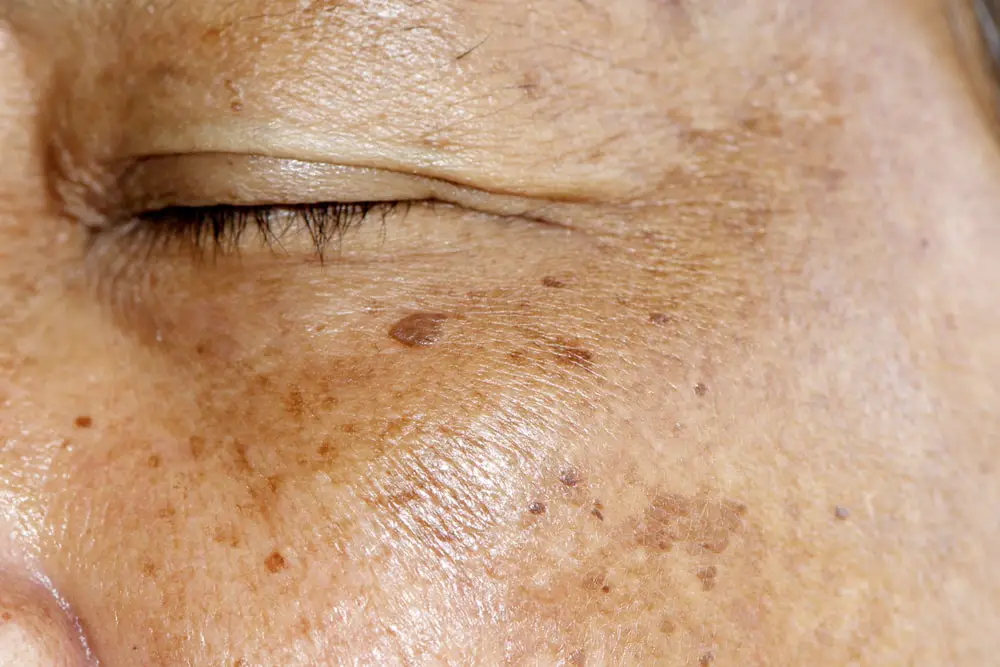
Common Treatments for Hyperpigmentation
There are a variety of effective treatments of hyperpigmentation, but most have the potential for negative side effects. For instance, the creams and ointments that are available often contain harsh ingredients that can result in skin irritation. In some cases this can make hyperpigmentation even worse.
Lasers treatments are another common treatment option. The most popular laser treatment is called Intense Pulsed Light, or IPL, which causes an intentional wounding of the inner layers of the skin that disburse the dark spots associated with hyperpigmentation. While effective, these treatments can be painful, expensive, and require multiple visits to the dermatologist.
Similarly, microdermabrasion is effective, but is also costly, painful, and may require multiple treatments. While these high-tech treatments can be effective, none of them work on all skin types, and none work for all types of hyperpigmentation.
A milder, more natural approach to the treatment of the condition entails the application of essential oils.
Types and Causes of Hyperpigmentation
Hyperpigmentation can be hereditary, but it’s also caused by acne and too much-unprotected sun exposure. Don’t forget that sun protection!
There are three main varieties of hyperpigmentation:
- Post-inflammatory pigmentation
- Sunspots
- Melasma
Post-inflammatory pigmentation – This type of hyperpigmentation is associated with injuries to the skin, including eczema or acne.
Sunspots – As the name suggests, solar lentigines or sunspots are associated with excessive sun exposure. They are most commonly found on areas of the skin that get a lot of sun exposure, such as the backs of the hands and the face.
Melasma – While the exact cause of Melasma is unverified, evidence suggests that it can be attributed to hormonal changes that occur during pregnancy or other life changes, such as menopause. The resulting hyperpigmentation can show up on virtually any part of the body but is most often found on the face and in the abdominal area.
Best oils for Hyperpigmentation
Here’s a look at some of the best plant-based and essential oils for hyperpigmentation. These plant-based options can help reduce the appearance of hyperpigmentation without expensive or painful procedures.
Tea Tree Oil
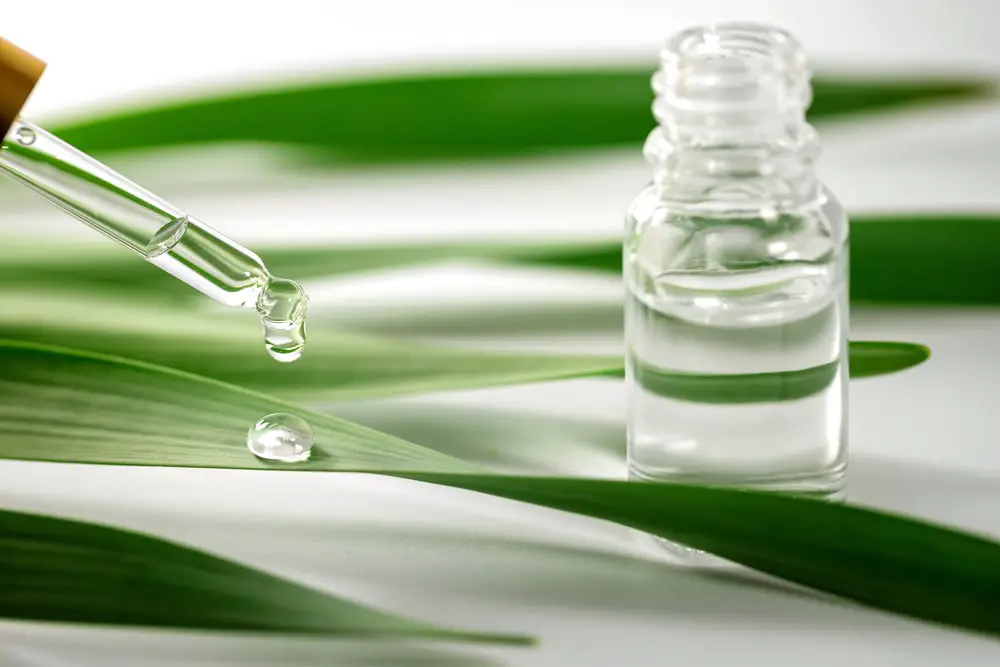
Tea tree oil is a great choice for hyperpigmentation caused by too much sun exposure. Primarily, it works to prevent the condition from occurring at all.
The oil is steam-distilled from a plant found in Australia, called Melaleuca alternifolia, and is an ingredient frequently found in over-the-counter skincare products.
Since most people tolerate it, tea tree oil has been deemed safe by manufacturers of personal care products unless an allergy presents. Tea tree oil has antibacterial and anti-inflammatory properties, which help fight the bacteria that could lead to hyperpigmentation.
Tea tree oil is most effective in preventing hyperpigmentation rather than treating existing spots. Some claims credit this oil with having resurfacing capabilities that help alleviate preexisting hyperpigmentation; there is a lack of substantial research to support the claim.
How to Use Tea Tree for Hyperpigmentation
In treating hyperpigmentation with Tea tree oil, the skin should be cleaned first. One drop of tea tree oil should be added per twelve drops of carrier oil. It is recommended that people with sensitive skin try a pre-diluted face or body wash containing the oil, and the product’s instructions or guidelines should be followed. Additionally, it is good to test for sensitivity by performing a spot test.
Begin the treatment by moistening a cotton ball with the double-oil solution, which should be gently applied to the affected area. After ten minutes, the solution should be rinsed. The oil should be applied twice a day for the most effective results.
Sandalwood Oil
Sandalwood is noted for being especially gentle to the skin yet exceptionally effective for treating specific dermatological ailments, including hyperpigmentation.
Known as Santalum album in Sanskrit, it comes from a tree found in India. The oil has a long history of use when mixed with additional ingredients, such as Turmeric paste, to apply to the skin.
Specific combinations are used to treat hyperpigmentation. The oil is thought to have natural astringent qualities that cool and purify the skin. It is often used to cleanse wounds and reduce inflammation, acne, and sunburn, but the claims are unsubstantiated by science.
How to Use Sandalwood for Hyperpigmentation
When used to treat hyperpigmentation, sandalwood is most commonly mixed with a choice of four ingredients.
When combined with milk, sandalwood is believed to fade hyperpigmentation in approximately four weeks significantly. A mixture of half milk and half sandalwood oil suspended in carrier oil should be applied to the dark areas of the skin after they have been gently cleansed. The mixture should be used with a clean cotton ball and left on the affected area overnight. It should be rinsed off the following day.
Sandalwood can also be mixed with rosewater for treating hyperpigmentation. Even though rose water has been used medicinally since the seventh century, it should be avoided by anyone allergic to roses.
For gradual fading of hyperpigmentation, two tablespoons of sandalwood powder or four to six drops of sandalwood essential oil suspended in double amounts of carrier oil and two to three tablespoons of rosewater mixed to form a relatively thin paste. The mixture should be spread on the areas with hyperpigmentation and worn as a mask. After one hour has passed, the mixture should be rinsed with cool water. Signs of fading often occur after one month of daily treatment.
Evening Primrose
Hyperpigmentation manifests irregularities found in the skin’s production and distribution of melanin. Science supports evening primrose’s ability to reduce melanin production by inhibiting an enzyme called tyrosinase. It also soaks up UV rays, causing the skin to slow melanin production altogether.
How to Use Evening Primrose for Hyperpigmentation
To use for hyperpigmentation, three to four drops of evening primrose essential oil should be added to double the amount of carrier oil and mixed well. The solution should be applied to areas. Remove the access oil and keep it on the skin overnight, rinsing it thoroughly the following day. Apple the solution at bedtime for 30 days to see the results.
Lemon essential oil
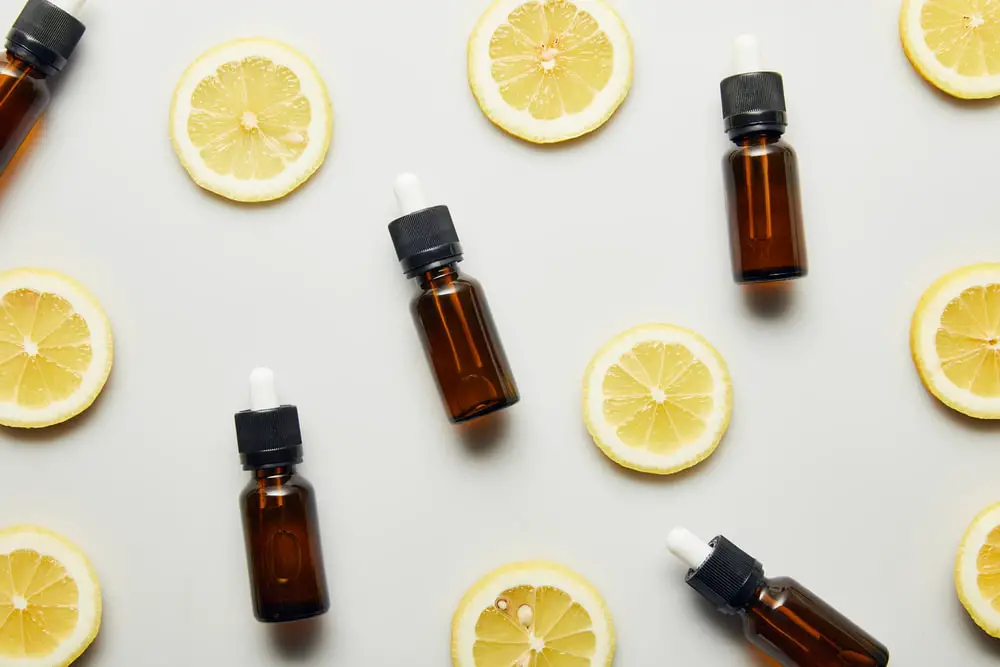
The lemon essential oil contains skin-protecting Vitamin C, which prevents damaging free radicals that contribute to melanin formation by reducing melanocyte synthesis.
Lemon oil contains limonene, a lightening agent that can help reduce the darkness caused by hyperpigmentation. It also has skin-lightening properties that help fade dark spots more quickly.
How to Use Lemon Oil for Hyperpigmentation
Treatment should begin with clean skin. Three to four drops of lemon essential oil should be added to twice as much carrier oil.
Any kind will do, but almond oil can cut the acidic nature of lemon oil and is the preference for sensitive skin. The mixture should be added to the dark areas before bedtime. Any surplus oil should be removed by blotting with a washcloth or cotton ball. The mixture should be removed in the morning and applied again for four weeks. The period can be extended as needed.
Carrot Essential Oil
Carrot seed oil is made from steam-distilled carrot seeds. Its plant is called D. sativus or Daucus carota. It is also known as:
- Bee’s nest
- Bishop’s lace
- Devil’s plaque
- Bird’s nest
Carrot essential oil has various medicinal properties that remove the fungus that appears on and injures the skin. It can fight some strains of bacteria, such as Staphylococcus aureus and Listeria monocytogenes, the same bacteria that causes food poisoning.
Carrot oil also contains 7-hydroxycoumarin or umbelliferon, which are compounds that block the UV rays that contribute to sunspots. Because the oil absorbs the UVB rays, it can be effective for treating hyperpigmentation. In addition to steam distilled carrot oil, it also comes in a cold-pressed form, used as a carrier oil. This oil is different from essential oil.
How to Use Carrot Seed Oil for Hyperpigmentation
Carrot seed oil should be mixed in equal parts with the carrier oil of one’s choice. It should be applied to clean skin with a soft cloth or cotton ball. After the excess fat is blotted from the skin, the mixture should be left in place overnight and rinsed off the following morning for up to six weeks, as necessary.
Lavender Essential Oil
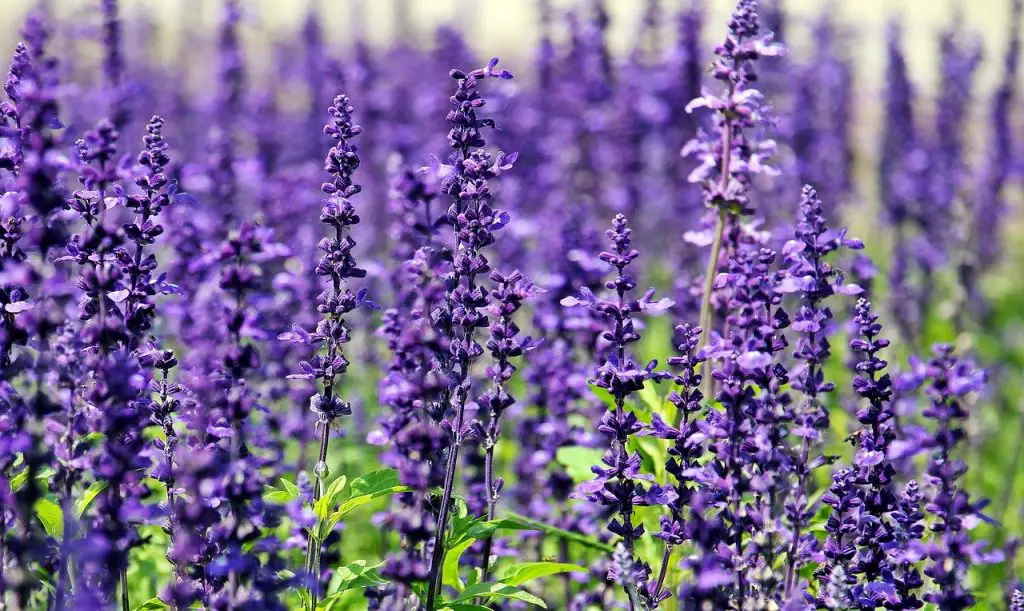
Known for its healing qualities and fragrant aroma, Lavender essential comes from a plant with the same name. Its numerous benefits for the skin come from creating the oil through a particular distilling method that produces a highly concentrated extract of the plant’s most valuable compounds.
It is effective in the treatment of hyperpigmentation. However, since this is a relatively mild oil, it takes six weeks to achieve satisfactory treatment.
One way in which the oil helps treat hyperpigmentation is to help prevent fungi and bacteria from growing on the skin by using its antimicrobial properties. It also has antioxidants that help protect the skin from free radicals, and also contribute to hyperpigmentation.
How to Use Lavender Oil for Hyperpigmentation
Lavender oil should be used sparingly by two to four drops in a quarter cup of carrier oil and mixed. This mixture should be applied to the affected areas with a cotton ball. The skin should be cleaned thoroughly prior to application. The oil should be left on for at least 8 hours, making bedtime the ideal time to apply it.
After 8 hours, it can be removed with cool water and reapply as needed. Users have reported seeing results beginning to show within as few as three weeks. It can sometimes take up to six weeks before the dark spots have been disbursed.
Unlike other essential oils, Lavender oil treats hyperpigmentation by lightening the skin as it gradually reduces inflammation, and is reported to be very effective.
Geranium Oil

Geranium comes from the distillation of the South African Pelargonium graveolens plant. It is used for a variety of health conditions, including the removal of hyperpigmentation. Scientific research has confirmed that geranium oil contains antimicrobial, astringent, anti-inflammatory, antioxidant, and antibacterial properties.
Some people may experience a burning sensation or mild rash when using this oil. It should be mixed with a carrier oil and applied to clean skin twice a day for four weeks for the most effective treatment. The treatment can be extended for up to two additional weeks if the initial period does not seem sufficient. The oil should remain on the skin for up to eight hours.
Rosehip Seed Oil
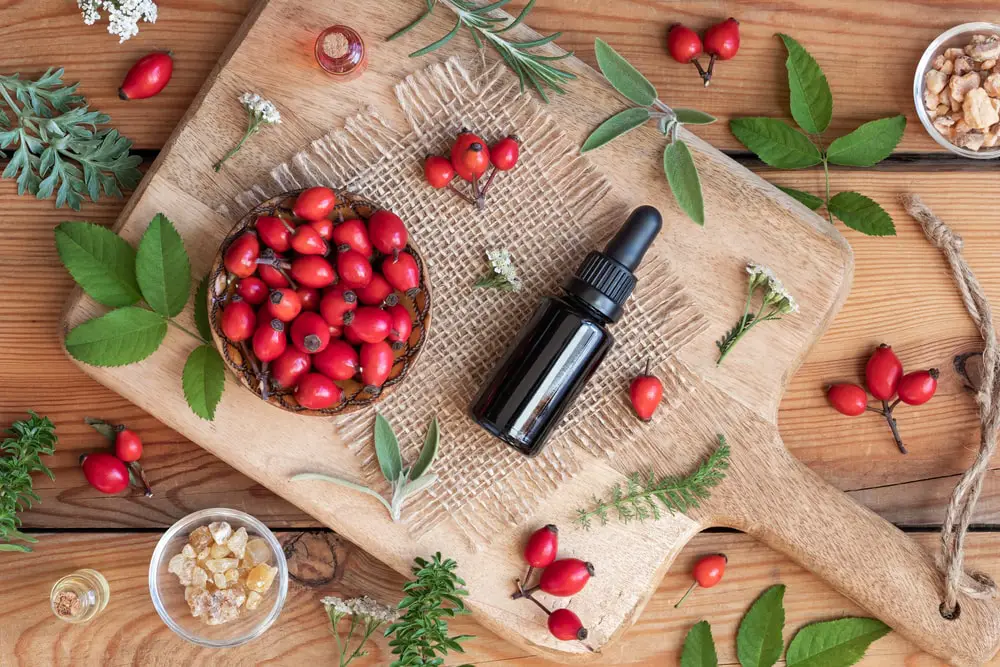
Rosehip seed oil is a natural oil extracted from the seeds of wild roses. It is extremely popular in the skincare industry and has been around for centuries.
It contains vitamin A which encourages cell turnover. This process of shedding skin cells reveals a smoother and more even tone, making it a great option for hyperpigmentation.
Rosehip oil offers a wide range of benefits in addition to evening skin tone. It also calms, soothes, hydrates, brightens, and helps reduce the appearance of fine lines and wrinkles.
Tamanu Oil
Tamanu oil is packed with powerful antioxidants that help protect the skin from damage from UV rays. It’s a great natural option to prevent sun spots or keep them from darkening. According to studies, using tamanu can reduce hyperpigmentation by up to 70%.
While hyperpigmentation may never completely go away, it can be visibly reduced by using ingredients such as tamanu oil.
Papaya Seed Oil
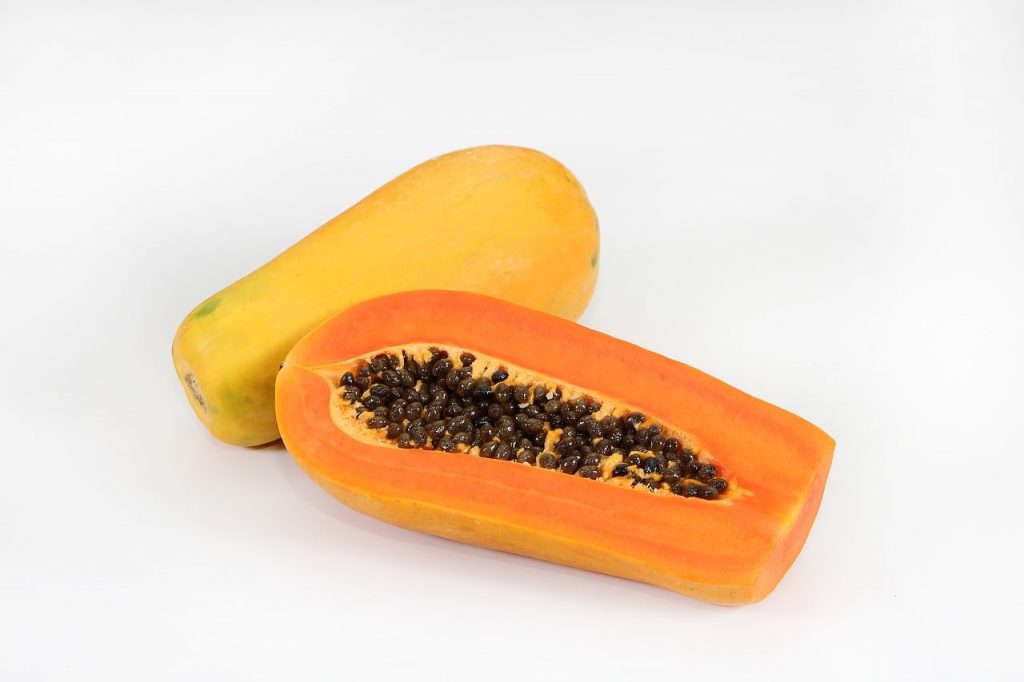
Papaya seed oil contains vitamin C and powerful antioxidants that protect the skin and help even tone. It can visibly reduce the appearance of hyperpigmentation.
Similar to Vitamin A, the Vitamin C in papaya seed oil promotes cell turnover. This helps brighten the skin and reveal a smoother, more even complexion.
Frankincense Oil
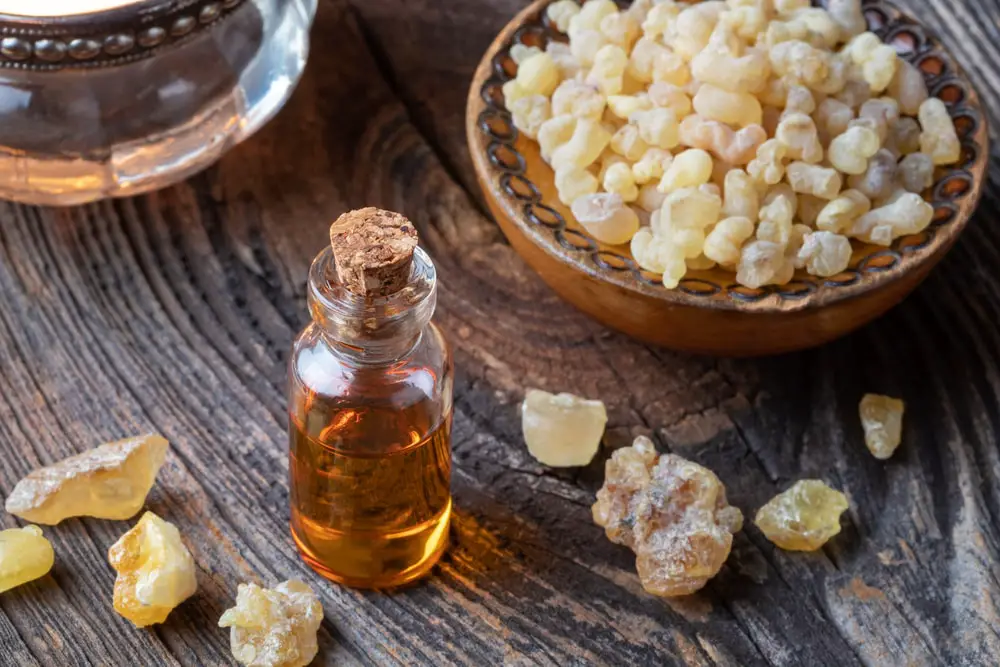
Frankincense oil helps strengthen the skin and can improve tone and skin firmness. It contains antibacterial and anti-inflammatory properties that offer a nice defense against blemishes.
One study found frankincense oil also contains tissue remodeling properties which can be useful for hyperpigmentation. It’s a popular ingredient in products targeting hyperpigmentation, redness, and acne.
Vitamin E Oil
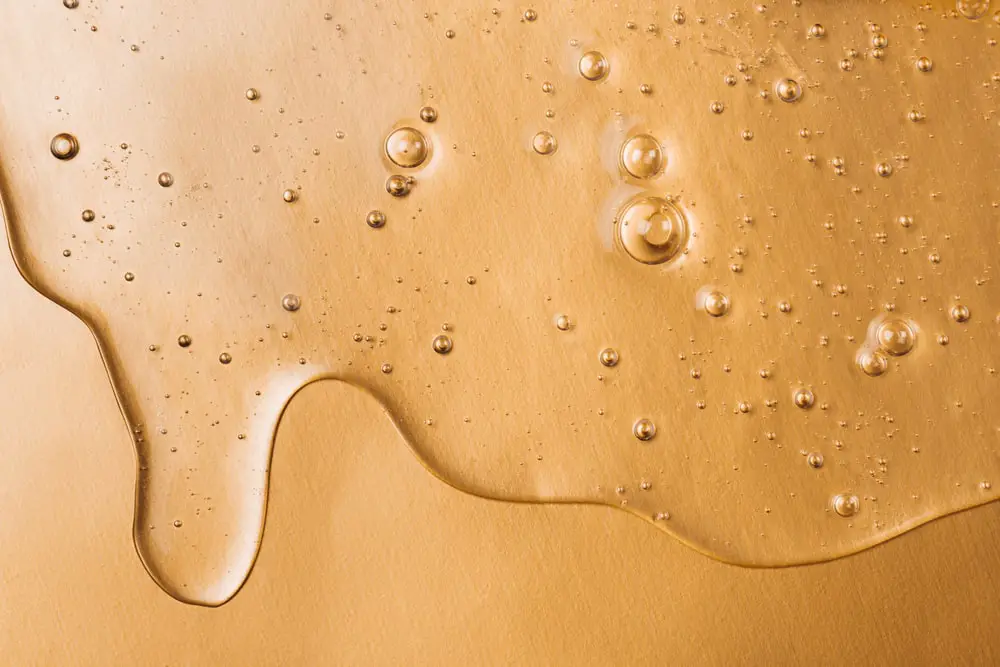
Vitamin E is the ultimate skin-replenishing and soothing oil. It’s the ingredient most of us think of to help heal wounds or scars. But it can also be a useful ingredient for hyperpigmentation. Studies found vitamin E is moderately effective a visibly reducing hyperpigmentation. But it’s more effective when combined with ingredients such as vitamin C.
Other Ingredients for Treating Hyperpigmentation
You can’t go wrong with the top oils listed above. But oils aren’t the only way to visibly reduce hyperpigmentation! You’ll love these additional extracts and serums.
Aloe vera
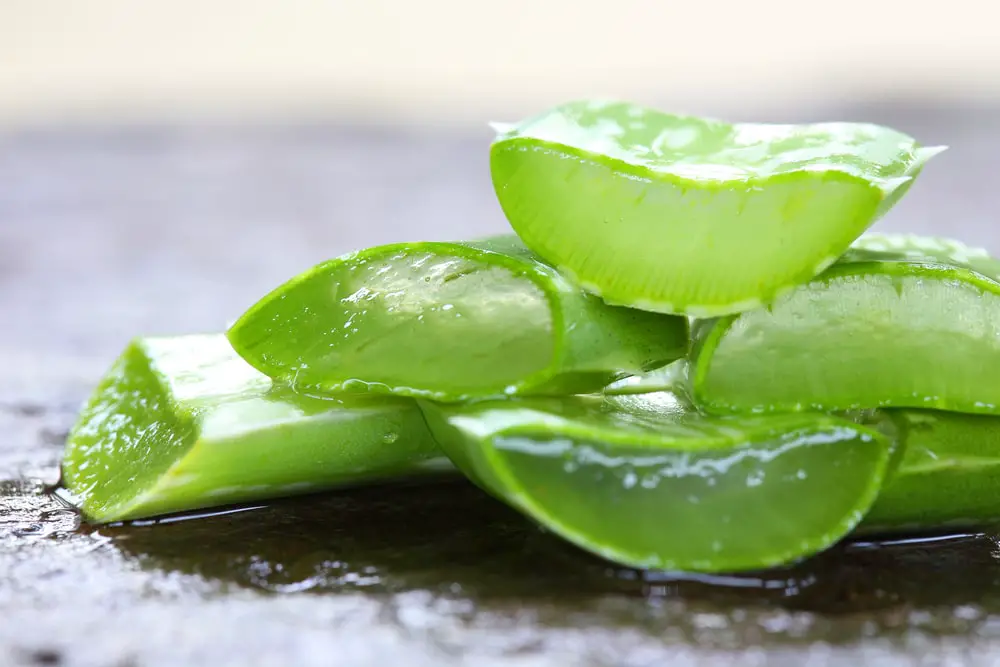
Aloe vera is another ingredient known for its dermatological healing properties. Its gel should be added to the affected areas, followed by a fifty-fifty sandalwood and carrier oil mixture. For hyperpigmentation treatment, the mixture should be applied every third day for up to one month for the best results.
Licorice Extract
This natural extract comes from the licorice plant, Glycyrrhiza glabra. As you may have guessed, black licorice candy is made from this plant. It contains antioxidants, anti-inflammatory properties, prevents excess melanin, and helps control oil production.
Licorice root extract is a natural skin brightener. It soothes the skin and helps fade sunspots. This ingredient is common in brightening products and those focusing on evening texture and tone.
Bearberry Extract
Bearberry is a red berry best known for treating bladder and urinary tract infections. But it’s also useful in skincare!
Bearberry is an herbal, trailing evergreen plant (Arctostaphylos uva-ursi) of the heath family with astringent foliage and red berries. You may have heard about it before as its leaves are best known and historically used to treat bladder and urinary tract infections.
Similar to licorice root, bearberry helps limit excess pigmentation in the skin that can lead to sunspots. It contains arbutin which can help lighten dark spots and even complexion with consistent use. Arbutin is an effective option for hyperpigmentation and it’s not as aggressive as hydroquinone.
Vitamin C
You can’t talk about the best ingredients for hyperpigmentation without mentioning vitamin C! It’s one of the most widely used and researched skincare ingredients. And for good reason.
Vitamin C inhibits melanin production, making it a great solution for hyperpigmentation. It helps fade sun spots, age spots, and supports a healthy, even skin tone. This powerhouse ingredient is also packed with antioxidants that help protect the skin from damaging free radicals.
In Closing
Clearly, there are plenty of effective oils for hyperpigmentation. While these oils are great, no need to stop there! Consider additional ingredient types, beyond those in the oil form.
Remember, everyone’s skin is different. What works for others might not work for you. Luckily you have plenty of amazing options to try. Find out what works best for your skin type.

